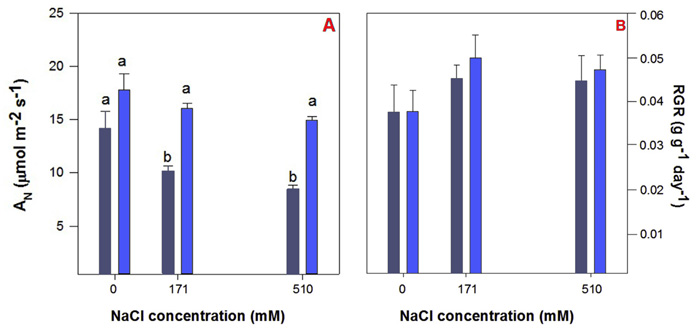| Tweet | Follow @co2science |
Paper Reviewed
Pérez-Romero, J.A., Idaszkin, Y.L., Barcia-Piedras, J.-M., Duarte, B., Redondo-Gómez, S., Cacador, I. and Mateos-Naranjo, E. 2018. Disentangling the effect of atmospheric CO2 enrichment on the halophyte Salicornia ramosissima J. Woods physiological performance under optimal and suboptimal saline conditions. Plant Physiology and Biochemistry 127: 617-629.
Salicornia ramosissima is an edible halophyte capable of growing in hostile environments of high salinity and/or water deficit. Recently, according to Pérez-Romero et al. (2018), it has been recognized as a multifunctional cash crop, having been utilized as a gourmet food ingredient, feed for cattle, and as a tool for phytoremediation. However, little is known about how this plant might respond to future changes in climate that could alter its growing conditions. Consequently, Pérez-Romero et al. set out to examine the combined impacts of elevated CO2 and salinity on this crop species.
Work was conducted under controlled-environment conditions in Lisbon, Portugal, where 3-month-old S. ramosissima seedlings were exposed to one of three salinity treatments (0, 171 or 513 mM NaCl) under either normal (400 ppm) or elevated (700 ppm) atmospheric CO2 concentrations for a period of 30 days. At the end of this period, the authors conducted a number of measurements in an effort to assess the impacts of elevated CO2 on various growth-related parameters of this species.
Results of the analysis revealed, in the words of the authors, that "atmospheric CO2 enrichment would increase the tolerance of the halophyte S. ramosisima to suboptimal salinity concentration (NaCl excess)." As indicated in the figure below, plants growing under elevated CO2 were able to maintain similar values of net photosynthesis, regardless of salinity level. In contrast, at ambient CO2 net photosynthesis declined as the salinity content rose. This positive effect, according to Pérez-Romero et al., was linked to "a reduction of mesophyll conductance and biochemical limitation imposed [by] salt excess."
Other noted benefits of CO2 enrichment included an improved water balance resulting from a reduction in stomatal conductance and a reduction in the risk of reactive oxygen species production, indicated by an improvement of the electron flux and a rise of energy dissipation. Lastly, Pérez-Romero et al. report that "the positive effect of the CO2 was also supported by the modulation of pigments profiles (mainly zeaxhantin and violaxhantin) concentrations and anti-oxidative stress enzymes, such as superoxide dismutase and ascorbate peroxidase." And in light of all of the above findings, the scientists conclude that "this multifunctional cash crop specie could be an interesting suitable natural resource to be cultivated in a future climate change scenario, where an increment of soil salinity concentration is expected together with the atmospheric CO2 enrichment."

Figure 1. Net photosynthesis (AN) and relative growth rate (RGR) of S. ramosissima after 30 days of growth under normal (400 ppm, dark blue bars) or enriched (700 ppm, light blue bars) atmospheric CO2 and three different soil salinity concentrations (0, 171 or 510 mM NaCl). Different letters indicate means that are significantly different from each other (P < 0.05) Adapted from Pérez-Romero et al. (2018).




